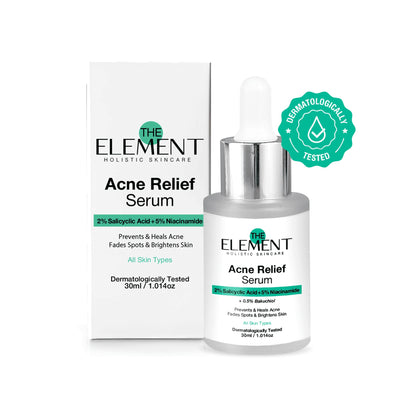Licorice Root for Skin: Benefits, Uses, and Future Trends

Introduction
When it comes to natural skincare ingredients, few are as versatile and effective as licorice root. Known for its soothing and brightening properties, licorice root has been used for centuries in traditional medicine and is now a popular ingredient in modern skincare products. But what makes licorice root so special for your skin? In this article, we’ll dive deep into the benefits of licorice root for skin, its challenges, and the exciting future trends in skincare that involve this powerful botanical extract.
What is Licorice Root?
Licorice root is derived from the root of the Glycyrrhiza glabra plant, a herbaceous perennial native to parts of Europe, Asia, and the Middle East. It contains a variety of active compounds, including glabridin and licochalcone A, which are responsible for its skin-soothing, anti-inflammatory, and brightening effects. These properties make licorice root a sought-after ingredient in skincare formulations aimed at treating hyperpigmentation, redness, and other skin concerns.
Benefits of Licorice Root for Skin
1. Brightens Skin and Reduces Hyperpigmentation
Licorice root is widely recognized for its ability to brighten the skin and reduce dark spots. The compound glabridininhibits the enzyme tyrosinase, which is responsible for melanin production. This makes licorice root an effective natural remedy for hyperpigmentation, sunspots, and uneven skin tone.
2. Soothes Inflammation and Redness
The anti-inflammatory properties of licorice root, particularly due to licochalcone A, make it ideal for calming irritated or sensitive skin. It’s often used in products designed for conditions like rosacea, eczema, and acne-prone skin.
3. Protects Against Environmental Damage
Licorice root is rich in antioxidants, which help protect the skin from free radicals caused by UV rays and pollution. This not only prevents premature aging but also supports overall skin health.
4. Fights Acne and Controls Oil Production
For those with oily or acne-prone skin, licorice root can be a game-changer. Licochalcone A helps regulate oil production and has antibacterial properties that combat acne-causing bacteria.
5. Hydrates and Nourishes the Skin
Licorice root also contains polysaccharides, which help retain moisture in the skin, leaving it hydrated and plump. This makes it a great addition to products aimed at dry or dehydrated skin.
How Licorice Root is Used in Skincare
Licorice root is a versatile ingredient that can be found in various types of skincare products, including:
- Serums: Concentrated formulas for targeting dark spots and uneven skin tone.
- Cleansers: Gentle cleansers with licorice root extract to soothe and brighten the skin.
- Moisturizers: Hydrating creams that incorporate licorice root for added antioxidant protection.
- Spot Treatments: Targeted solutions for hyperpigmentation and acne scars.
- Sunscreens: Licorice root is often included in sunscreens for its ability to protect against UV-induced pigmentation.
Future Trends in Skincare Products Featuring Licorice Root
The skincare industry is constantly innovating, and licorice root is expected to remain a key ingredient in future formulations. Here are some exciting trends to watch:
1. Advanced Delivery Systems
New technologies are being developed to enhance the stability and absorption of licorice root’s active compounds, ensuring maximum effectiveness.
2. Combination Formulas
Licorice root is increasingly being combined with other natural ingredients like niacinamide, vitamin C, and hyaluronic acid to create multi-functional products.
3. Sustainable Sourcing
As consumers become more eco-conscious, brands are focusing on sustainably sourcing licorice root to minimize environmental impact.
4. Personalized Skincare
With the rise of personalized skincare, licorice root is being tailored to address specific skin concerns, from hyperpigmentation to sensitivity.
Conclusion
Licorice root is a powerful and versatile ingredient that offers a wide range of benefits for the skin. From brightening dark spots to soothing inflammation and protecting against environmental damage, it’s no wonder this natural extract has become a staple in modern skincare. Whether you’re dealing with hyperpigmentation, redness, or acne, licorice root can be a valuable addition to your routine.
If you found this article helpful, don’t forget to share it with your friends and explore our other skincare guides. Your journey to healthier, glowing skin starts here!
Frequently Asked Questions (FAQs)
What is licorice root used for in skincare?
Licorice root is used for its brightening, anti-inflammatory, and antioxidant properties. It helps reduce hyperpigmentation, soothe redness, and protect the skin from environmental damage.
Can licorice root be used daily?
Yes, licorice root is safe for daily use. However, it’s always a good idea to patch-test new products before incorporating them into your routine.
Is licorice root suitable for all skin types?
Licorice root is generally suitable for all skin types, including sensitive skin. However, those with allergies or extremely reactive skin should consult a dermatologist before use.
How long does it take to see results from licorice root?
Results can vary depending on the individual and the specific skin concern. For hyperpigmentation, it may take several weeks of consistent use to see noticeable improvements.
Are there any side effects of using licorice root on the skin?
While rare, side effects may include mild irritation, redness, or allergic reactions. Always patch-test and follow product instructions to minimize risks.






